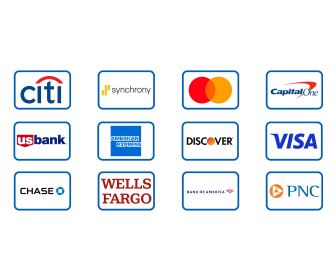How to Use Credit Cards to Build Credit as a New Immigrant
Moving to the United States is exciting — but one of the biggest challenges new immigrants face is building credit from scratch. In a country where your credit score determines everything from renting an apartment to getting a phone plan, understanding how to use credit cards responsibly is essential. Here’s how newcomers can start building credit history quickly, safely, and effectively using credit cards.
1. Understand How the U.S. Credit System Works
The U.S. credit system is based on a credit score (usually FICO® or VantageScore®) that ranges from 300 to 850. It measures how likely you are to repay borrowed money. The five main factors are:
- Payment history (35%) – Paying bills on time is the most important factor.
- Credit utilization (30%) – Keep balances under 30% of your limit.
- Length of credit history (15%) – Older accounts boost your score.
- Credit mix (10%) – Using different types of credit responsibly helps.
- New credit (10%) – Opening too many cards too fast can hurt your score temporarily.
As a new immigrant, you likely start with no U.S. credit history — but that’s fixable with the right first card and consistent payments.
2. Start With a Secured Credit Card
A secured credit card is designed for people with little or no credit. You make a refundable deposit (usually $200–$500), which becomes your credit limit. You use the card like a normal credit card, and your activity is reported to the three major credit bureaus: Experian, Equifax, and TransUnion.
Some popular secured cards for immigrants include:
- Capital One Secured Mastercard® – Reports to all bureaus and can increase limit automatically with on-time payments.
- Discover it® Secured – Offers 2% cash back at gas stations and restaurants plus a free FICO® Score each month.
- Chime Credit Builder Visa® – No credit check or fees, perfect for first-timers using direct deposit.
3. Use Your Card Responsibly
Responsibility is everything. Make small purchases (like groceries or phone bills) and pay them off in full each month. Avoid maxing out your card, as high balances hurt your utilization ratio and lower your score.
Pro tip: Set up automatic payments for at least the minimum due, and pay early — ideally before your statement closing date — to ensure low balances are reported to the credit bureaus.
4. Graduate to an Unsecured Card
After 6–12 months of consistent payments, your secured card issuer may offer to “graduate” you to an unsecured credit card (no deposit required). This transition boosts your credit history length and expands your available credit, both of which help your score grow faster.
When you upgrade, keep your old secured account open if possible — closing it shortens your credit history, which can lower your score slightly.
5. Avoid Common Mistakes
- Don’t apply for multiple credit cards at once — each application adds a “hard inquiry.”
- Never pay late — even one missed payment can drop your score dramatically.
- Avoid carrying large balances; interest rates on credit cards often exceed 20% APR.
- Check your credit reports regularly for errors at AnnualCreditReport.com.
Expert insight: If your home country has a credit relationship with a global bank (like HSBC, Amex, or Capital One), ask if they offer an international credit transfer program. Some banks can import your existing creditworthiness to help you skip the “no credit” phase.
6. Expand Your Credit Profile Over Time
After a year or two of responsible credit card use, diversify your credit mix with other accounts like a small personal loan, car loan, or retail card. These additional lines of credit strengthen your profile and improve your score stability.
Final Thoughts
Building credit as a new immigrant takes patience, but it’s absolutely achievable. Start small, pay consistently, and monitor your progress. Within a year, you can go from no credit history to a solid score that opens doors — from apartments to auto loans to your first mortgage. In America, good credit isn’t just a number — it’s the key to financial independence.
Not financial advice. Credit card offers and requirements change regularly. Always verify the latest terms and eligibility criteria with the official issuer before applying.
Continue reading: Best Cards for Bad Credit: Can You Still Get Approved? · Student Loans & Credit Cards: How They Impact Each Other



